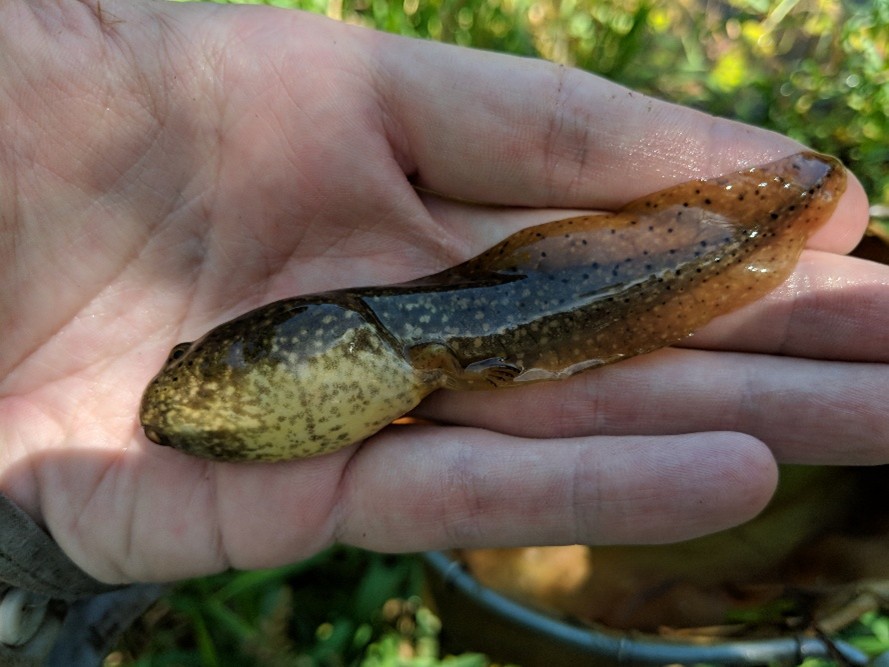Fun FacTOADS on Kansas Frogs
You’ve likely heard them already this spring.
But do you really know much about the frogs found in Kansas? Here are just a few interesting facts about the amphibians living in our community.
• Kansas has 21 species of frogs with known established populations as of May, 2025. Multiple other species have the potential to be found in Kansas, but they aren’t considered state residents yet.
• All toads are frogs, but not all frogs are toads. Toads are a subset of frogs that have distinct characteristics that make them a tad (pole) different then other frogs. Toads have warty skin that appears dry, while frogs have smooth, wet skin. Kansas has six species of true toads.
• The American Bull Frog is the largest species of frog in Kansas. Tadpoles of this species can reach an impressive 6 inches long. While most frog species spend just one season as a tadpole, bullfrogs can remain tadpoles for multiple years.

Bullfrog tadpole, credit: USGS
• The adults of many Kansas frog species are very small. Cricket frogs, spring peepers, and boreal chorus frogs all only grow to around an inch in length. You wouldn’t guess that by the volume of their calls!
• Frog diversity is a good indicator of water quality. The more species of frogs an area has (with equitable population numbers), the more likely the water there is clean. This has also been found in macro invertebrates as well such as dragonfly and mosquito larvae.
• Certain frogs cannot utilize water bodies that have fish in them. While it may seem like a good idea to put fish in every pond you come across, some amphibians rely on fish-less, ephemeral ponds to reproduce. The reason? Fish love to eat tadpoles! Bullfrogs, greenfrogs, and cricket frogs are a few of the frogs that can coexist with fish. Others, like chorus frogs and spring peepers, would rather not swim with the fishes.
There are so many more cool facts about frogs found in Kansas. The next time you go outside, pay attention to what you see and hear. You may discover a Kansas frog you’ve never seen before!

Credit: Tom R. Johnson and Missouri Department of Conservation
by Amy Keigher, Natural Resources Agent, 2025